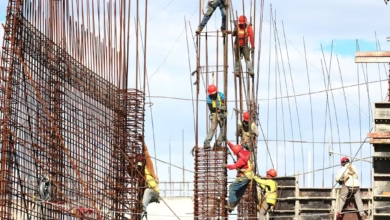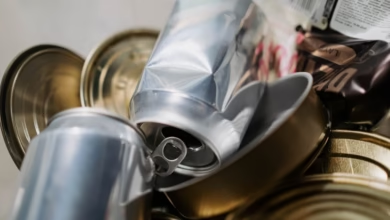Understanding Metal Corrosion and Protection: Strategies for Preventing Degradation in Industrial and Precious Metals

Metal corrosion is an inevitable challenge that affects a wide array of industries, leading to significant financial losses and safety concerns. From construction metals like steel and aluminum to precious metals such as gold and platinum, understanding the types and causes of metal degradation is crucial for effective management. In this article, we will explore the intricacies of metal corrosion, focusing on both ferrous and non-ferrous metals, and how their unique properties influence their susceptibility to corrosion. Additionally, we will discuss effective protection strategies for industrial metals, ranging from advanced coatings to innovative alloy compositions that enhance durability and longevity. As the demand for sustainable practices grows, we will also delve into the future trends in metallurgy and metal commodities, highlighting sustainable metal production and the importance of metal recycling in reducing environmental impact. Whether you're involved in metal fabrication, automotive manufacturing, or gold and silver investing, understanding metal corrosion and its management will be essential for ensuring the longevity and efficiency of metal products in an ever-evolving market. Join us as we navigate through these critical topics and uncover strategies to combat metal corrosion while embracing sustainable practices in the metal industry.
- 1. Understanding Metal Corrosion: Types and Causes in Ferrous and Non-Ferrous Metals
- 2. Effective Protection Strategies for Industrial Metals: From Coatings to Alloy Composition
- 3. Sustainable Practices in Metal Recycling and Production: Future Trends in Metallurgy and Metal Commodities
1. Understanding Metal Corrosion: Types and Causes in Ferrous and Non-Ferrous Metals
Metal corrosion is a natural process that leads to the degradation of metals, posing significant challenges across various industries. Understanding the types and causes of corrosion in both ferrous and non-ferrous metals is essential for effective prevention and management strategies.
Ferrous metals, such as steel and iron, are particularly susceptible to corrosion due to their high iron content. The most common form of corrosion in ferrous metals is rusting, which occurs when iron reacts with oxygen and moisture in the environment. This process results in the formation of iron oxides, which not only weaken the metal structure but can also lead to costly repairs in sectors like construction and automotive manufacturing. Factors such as exposure to acidic environments or saltwater can accelerate this degradation.
On the other hand, non-ferrous metals, including aluminum, copper, and zinc, exhibit different corrosion behaviors. Aluminum, known for its lightweight and strength, develops a protective oxide layer that can inhibit further corrosion. However, in environments with high levels of chloride, such as coastal areas, this layer can be compromised. Copper, widely used in electrical applications and plumbing, can corrode through processes like pitting, which leads to localized damage. Zinc is often employed as a sacrificial anode to protect ferrous metals, as it corrodes preferentially, preserving the integrity of steel structures.
In addition to environmental factors, the composition of metal alloys significantly influences their corrosion resistance. For instance, the addition of elements like nickel and chromium to steel creates stainless steel, which exhibits superior resistance to corrosion. This is particularly crucial in industries requiring sustainable metal production practices, where the longevity and reliability of materials directly impact operational efficiency and resource conservation.
Moreover, precious metals such as gold and platinum exhibit excellent corrosion resistance, making them ideal for applications in jewelry and electronics. Their stability ensures that they maintain their appearance and functionality over time, a vital consideration in both consumer goods and industrial components.
Understanding these corrosion mechanisms is essential for industries invested in metal recycling and metal mining, as it informs the development of better protective measures and more durable metal commodities. With the rise of innovative technologies like 3D printing metals and increased interest in battery metals like lithium and palladium, addressing metal corrosion through advanced metallurgy is becoming a priority.
In summary, recognizing the types and causes of corrosion in both ferrous and non-ferrous metals is crucial for industries ranging from aerospace to automotive. By investing in effective corrosion prevention strategies and sustainable metal fabrication techniques, stakeholders can mitigate the risks associated with metal degradation, ultimately leading to more resilient infrastructure and products.
2. Effective Protection Strategies for Industrial Metals: From Coatings to Alloy Composition
Effective protection strategies for industrial metals are crucial in preventing and managing metal corrosion, which can significantly impact various industries, from construction to aerospace. The degradation of metals can lead to costly repairs and safety hazards, making it essential to implement effective protective measures.
One of the most common methods of protecting industrial metals is through the application of coatings. These coatings act as a barrier between the metal surface and the environment, effectively preventing corrosive agents from initiating degradation. There are various types of coatings available, including organic coatings, such as paints and varnishes, and inorganic coatings, such as galvanization or anodizing. For instance, aluminum and zinc coatings are often used on ferrous metals like steel to provide a sacrificial layer that corrodes instead of the underlying metal, extending its lifespan.
In addition to coatings, the selection of appropriate alloy compositions is vital in enhancing the corrosion resistance of metals. Metal alloys, which are mixtures of two or more metals, can be engineered to exhibit superior properties compared to their base metals. For example, stainless steel, an alloy of iron, chromium, and nickel, is widely used in environments prone to corrosion due to its excellent resistance to rust and degradation. Similarly, the addition of elements like copper in aluminum alloys improves their strength and corrosion resistance, making them ideal for automotive and aerospace applications.
Another strategy involves the use of corrosion inhibitors, which are chemical compounds that, when added to a corrosive environment, significantly reduce the rate of corrosion. These inhibitors can be particularly effective in protecting precious metals and rare earth metals used in electronic applications, helping to maintain their conductivity and structural integrity.
Furthermore, advancements in metallurgy and sustainable metal production techniques are paving the way for improved protection strategies. The development of refractory metals, which can withstand extreme temperatures and corrosive environments, is particularly beneficial in energy and aerospace sectors. Additionally, the integration of metal recycling practices into manufacturing processes not only contributes to sustainability but also allows for the recovery and reuse of valuable metals, such as lithium and platinum, reducing the need for new metal mining.
Incorporating innovative technologies, such as 3D printing metals, enhances the ability to create complex geometries that improve metal performance and reduce corrosion susceptibility. For example, 3D printed components in the automotive and aerospace industries can be designed to optimize material usage and enhance durability.
In conclusion, effective protection strategies for industrial metals involve a combination of coatings, alloy composition, corrosion inhibitors, and advancements in metallurgy. By understanding the unique properties of ferrous and non-ferrous metals and leveraging innovative techniques, industries can successfully prevent metal corrosion and extend the life of their products, ultimately contributing to more sustainable practices in metal fabrication and production.
3. Sustainable Practices in Metal Recycling and Production: Future Trends in Metallurgy and Metal Commodities
The future of metallurgy and metal commodities is increasingly intertwined with sustainable practices in metal recycling and production. As industries strive to minimize their environmental impact, there is a growing emphasis on the circular economy, which aims to extend the lifecycle of metals and reduce waste. Metal recycling plays a pivotal role in this transition, allowing for the recovery of precious metals like gold and platinum, as well as base metals such as aluminum, copper, and zinc, from discarded products. This not only conserves natural resources but also decreases the energy consumption associated with metal mining, which is particularly relevant for energy metals like lithium and cobalt used in batteries.
Emerging trends in metal recycling are driving innovation in metallurgy, particularly with the development of advanced metal alloys and the integration of 3D printing technologies. These innovations enable manufacturers to create lightweight, high-strength components for sectors like aerospace and automotive industries, thereby reducing material waste and enhancing efficiency. Additionally, the efficient recycling of ferrous and non-ferrous metals ensures that valuable resources are not lost, promoting a more sustainable approach to metal fabrication.
The increased focus on sustainable metal production has also led to a surge in the demand for rare earth metals, which are essential for various high-tech applications, including electronics and renewable energy technologies. As the global market for these metals expands, the importance of responsible sourcing and recycling practices becomes critical. This is particularly true for precious metals, where gold investing and silver investing are becoming more sustainable through responsible mining practices and increased recycling efforts.
Moreover, the construction and jewelry industries are witnessing a shift towards sustainable sourcing of metals, with consumers increasingly favoring products made from recycled materials. This trend is fueled by a growing awareness of metal corrosion and its implications for durability and environmental impact. By prioritizing recycled metals, industries can significantly reduce their carbon footprint and contribute to a more sustainable future.
As we look ahead, the integration of sustainable practices in metallurgy, alongside advancements in metal recycling, will shape the landscape of metal commodities. By embracing these changes, industries can not only meet the rising demand for metals but also play a crucial role in preserving the planet's resources for future generations. The ongoing evolution in metal trends will undoubtedly lead to a more sustainable and efficient approach to metal production and consumption.
In conclusion, understanding metal corrosion and its effective management is crucial for preserving the integrity and longevity of both ferrous and non-ferrous metals. By exploring the various types of corrosion and the underlying causes, industries can implement robust protection strategies that include advanced coatings and the development of specialized metal alloys. Furthermore, embracing sustainable practices in metal recycling and production not only addresses environmental concerns but also paves the way for future trends in metallurgy and metal commodities. As we look ahead, the importance of protecting industrial metals—such as steel, aluminum, and copper—will only grow, particularly in sectors like construction, aerospace, and automotive manufacturing.
Investing in precious metals, including gold and silver, remains a vital strategy for those interested in wealth preservation. Moreover, the ongoing evolution of metal mining and the introduction of battery metals such as lithium and rare earth metals highlight the dynamic landscape of metal fabrication and usage. By staying informed about metal trends, including the rise of 3D printing metals and the development of refractory metals, stakeholders can make strategic decisions that enhance both profitability and sustainability. Ultimately, a proactive approach to metal corrosion management will ensure the resilience of our metal resources while supporting the transition to sustainable metal production for future generations.
References:
[Add your citations here]




